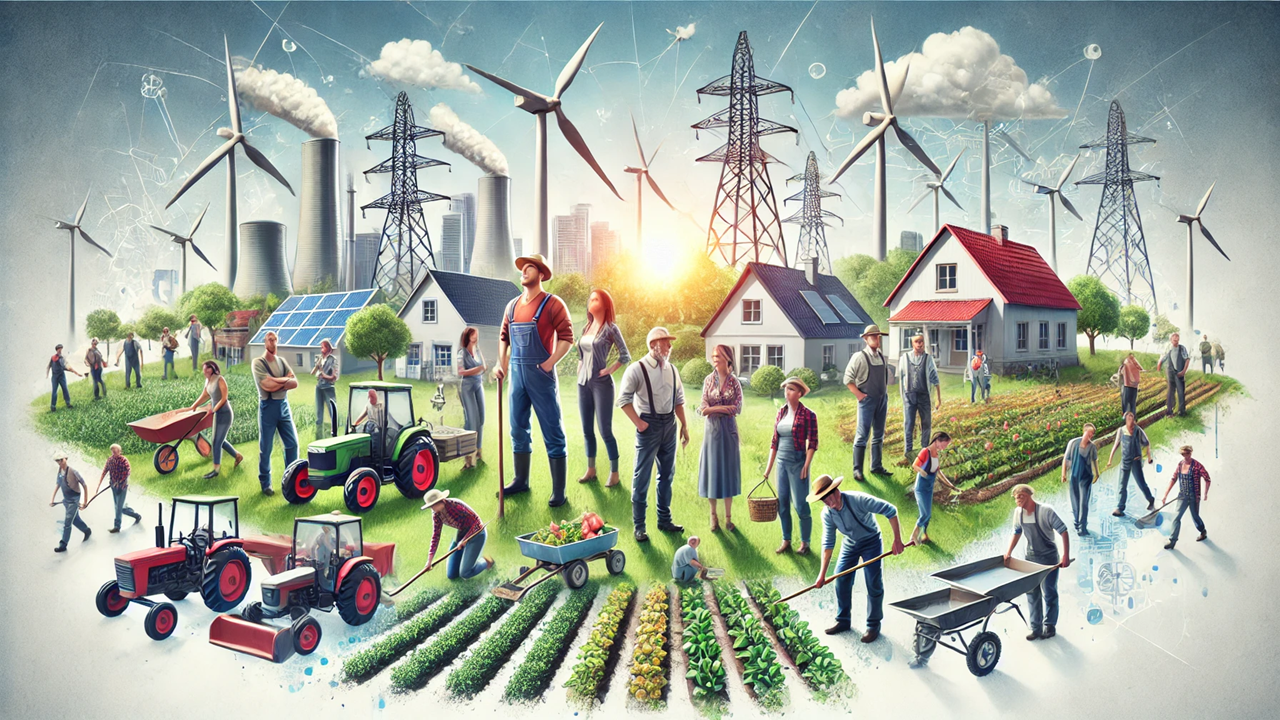Unlocking Growth: How Productivity and Sustainability Combat Poverty
A new study reveals that while economic growth helps reduce multidimensional poverty globally, the source of growth is key. Productivity, consumption, and sustainable practices show the strongest impact on reducing poverty, particularly in low-income and resource-dependent countries. Policymakers should focus on these drivers for more effective poverty alleviation strategies.

A comprehensive report titled "Disaggregated Impacts of Growth on Multidimensional Poverty: Does the Source of Growth Matter?" sheds new light on how economic growth can alleviate multidimensional poverty. The report, produced by the World Bank’s Poverty and Equity Global Practice, analyzed data from more than 80 countries over 20 years. Its findings are clear: while economic growth generally reduces poverty, not all growth is created equal. The key drivers of this reduction—productivity, consumption, and sustainable practices—make the biggest difference in fighting poverty, especially in resource-dependent countries.
Growth: A Mixed Blessing for Poverty Reduction
The connection between economic growth and poverty reduction has long been established, but this new research adds nuance to the debate. According to the findings, economic growth does reduce the Multidimensional Poverty Index (MPI), a measure that reflects deprivation in areas such as education, health, and living standards. However, the effectiveness of this growth varies dramatically based on where it occurs and how it is achieved.
In low-income countries and regions like Sub-Saharan Africa and Latin America, the impact of economic growth on poverty is noticeably smaller. These regions often face deeper structural challenges, such as limited infrastructure, weaker institutions, and a reliance on natural resources. Resource-dependent countries, in particular, struggle to translate growth into significant poverty reduction due to what economists call the "resource curse." This paradox occurs when countries rich in natural resources like oil and minerals experience slower overall development due to corruption, poor governance, or volatile commodity prices.
Productivity and Sustainability as Key Drivers
What makes some growth more effective than others? The study highlights that growth driven by total factor productivity (TFP), consumption, and sustainable practices plays a crucial role in reducing poverty. Total factor productivity refers to the efficiency with which all inputs in a production process are used, including labor, technology, and capital. Increases in TFP mean that a country can produce more without using more resources—a critical factor in improving living standards without depleting natural resources.
Consumption growth, particularly when it involves broad-based improvements in household income, directly impacts poverty by raising living standards. Households with more disposable income can access better nutrition, healthcare, and education, which in turn helps them break the cycle of poverty.
Sustainable growth, on the other hand, ensures that these gains are not short-lived. It takes into account environmental factors like the depletion of natural resources and carbon emissions, aiming for long-term development. The report emphasizes that sustainable practices, when prioritized, have a larger and more consistent impact on reducing multidimensional poverty than short-term, resource-intensive economic booms.
Policy Implications: Where to Focus
For policymakers, the implications of this report are clear. Countries looking to reduce poverty must prioritize growth strategies that enhance productivity and encourage consumption, but they must do so sustainably. This is especially true for nations that rely heavily on natural resources. By focusing on sectors that can drive long-term growth without depleting environmental resources, such countries can avoid the pitfalls of the resource curse and instead foster an economy that lifts people out of poverty.
Moreover, the study suggests that human capital development, capital deepening, investment, government spending, and trade policies—while important—show less consistent results when it comes to poverty reduction. These areas may require more tailored approaches depending on the unique conditions of each country.
For instance, simply increasing investment or government spending does not automatically lead to reduced poverty. If those funds are not efficiently allocated or if corruption is rampant, they may fail to reach the people who need them most. Similarly, trade policies that favor exports of natural resources might generate income but can exacerbate inequality if the benefits are not broadly shared.
A Path Forward
The findings from "Disaggregated Impacts of Growth on Multidimensional Poverty" point to a critical conclusion: to effectively combat poverty, growth must be inclusive, sustainable, and productivity-driven. Policymakers in low-income and resource-dependent countries must craft strategies that encourage innovation, technological advancement, and environmentally sound practices. In doing so, they can foster growth that not only boosts GDP but also significantly improves the well-being of their most vulnerable populations.
Economic growth alone is not a silver bullet for poverty reduction. But when it is built on the pillars of productivity, consumption, and sustainability, it can become a powerful force for change. For countries eager to reduce multidimensional poverty, the challenge now lies in directing growth toward these impactful drivers.
- FIRST PUBLISHED IN:
- Devdiscourse
ALSO READ
South Africa's G20 Presidency: Leading with Solidarity and Sustainability
West Bengal's Strategic GST Amendments: A Catalyst for Economic Growth
Renewable Energy Surge: A Significant Leap Towards Sustainability
Chouhan Champions Agricultural Diversification for Economic Growth
Sustainability Drives Success: SMEs Transforming Logistics










